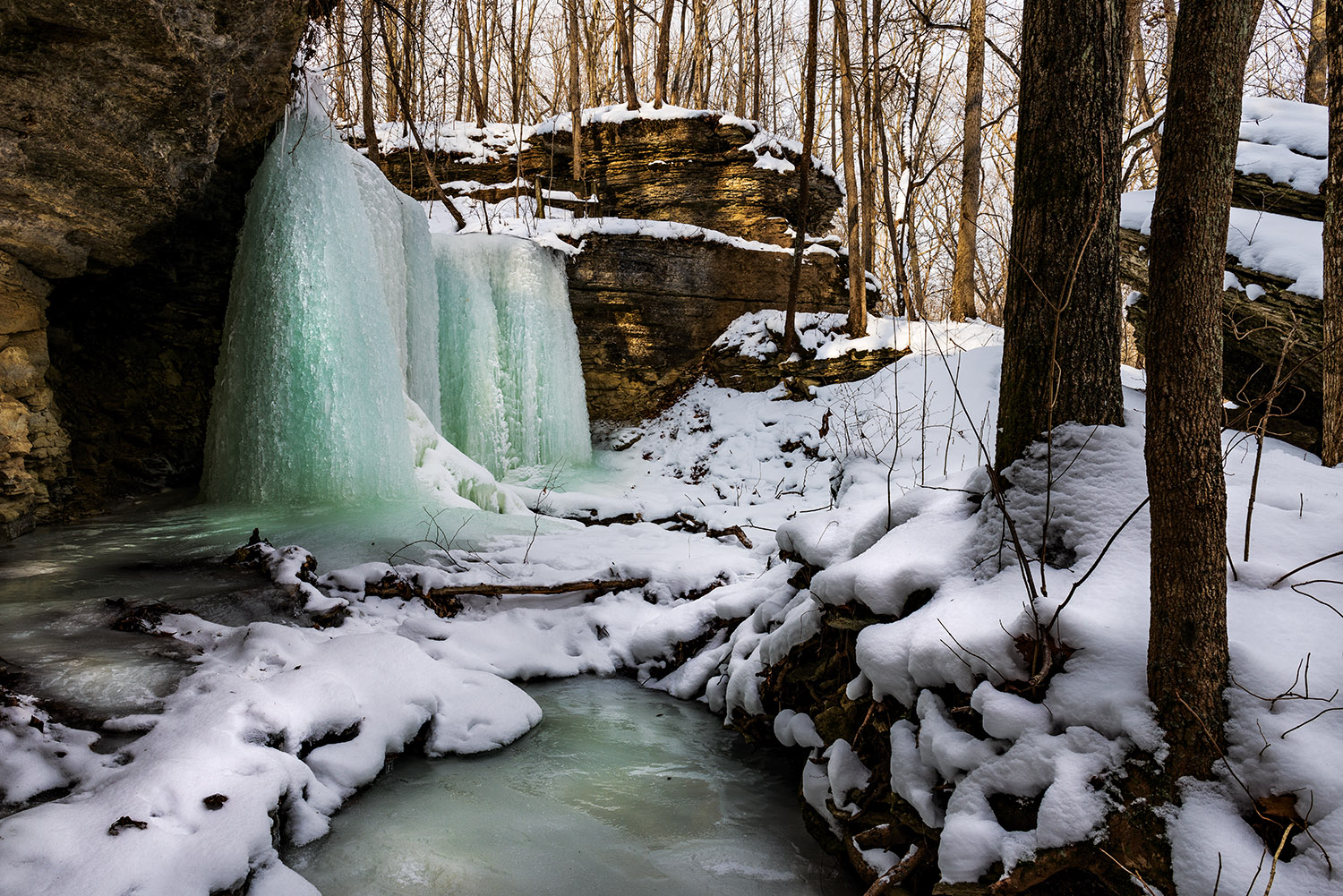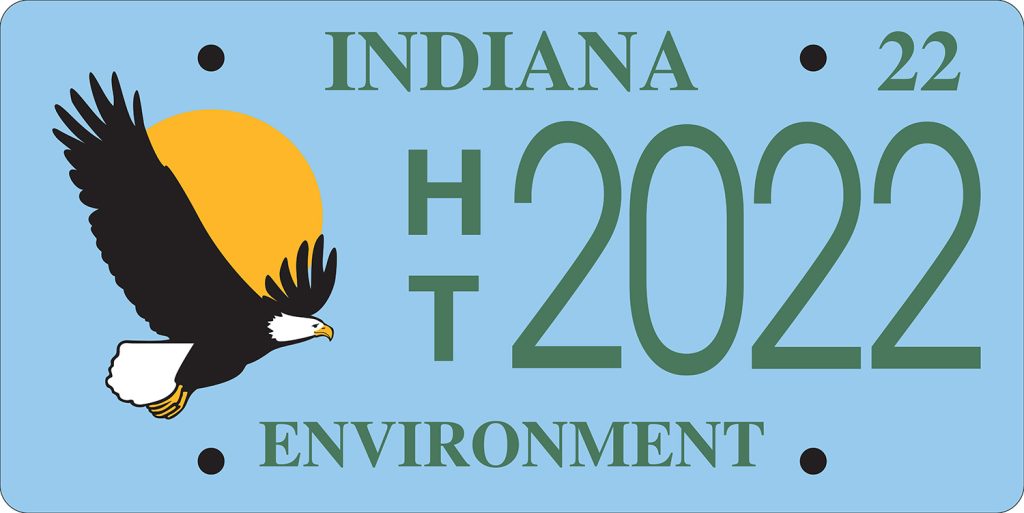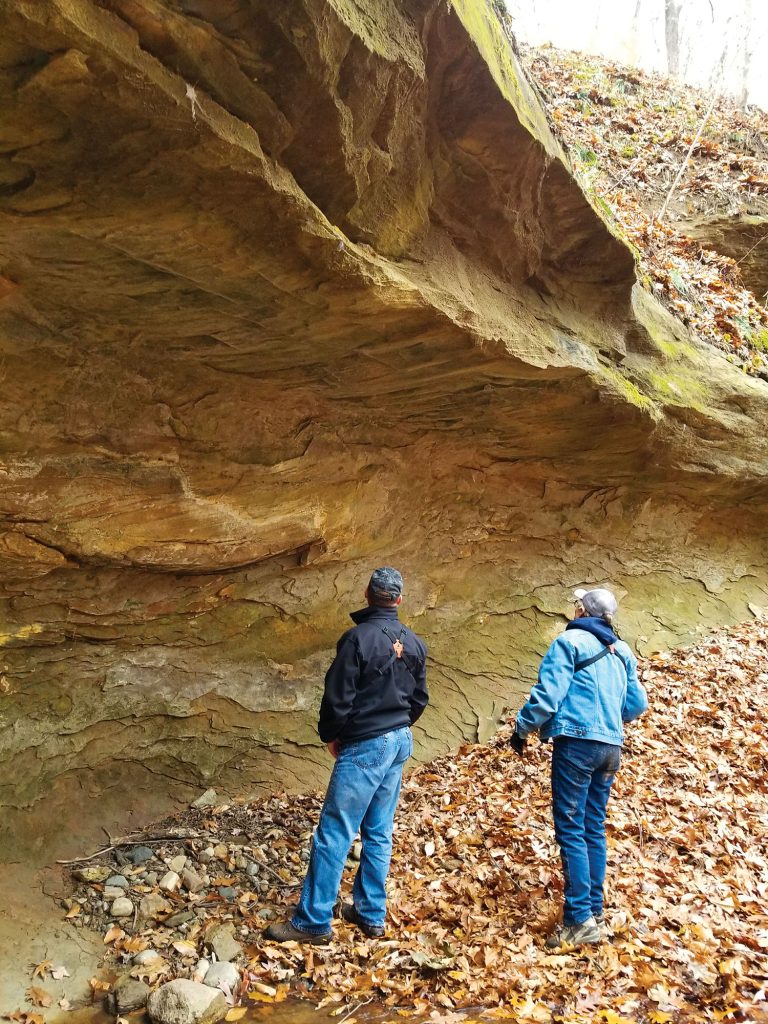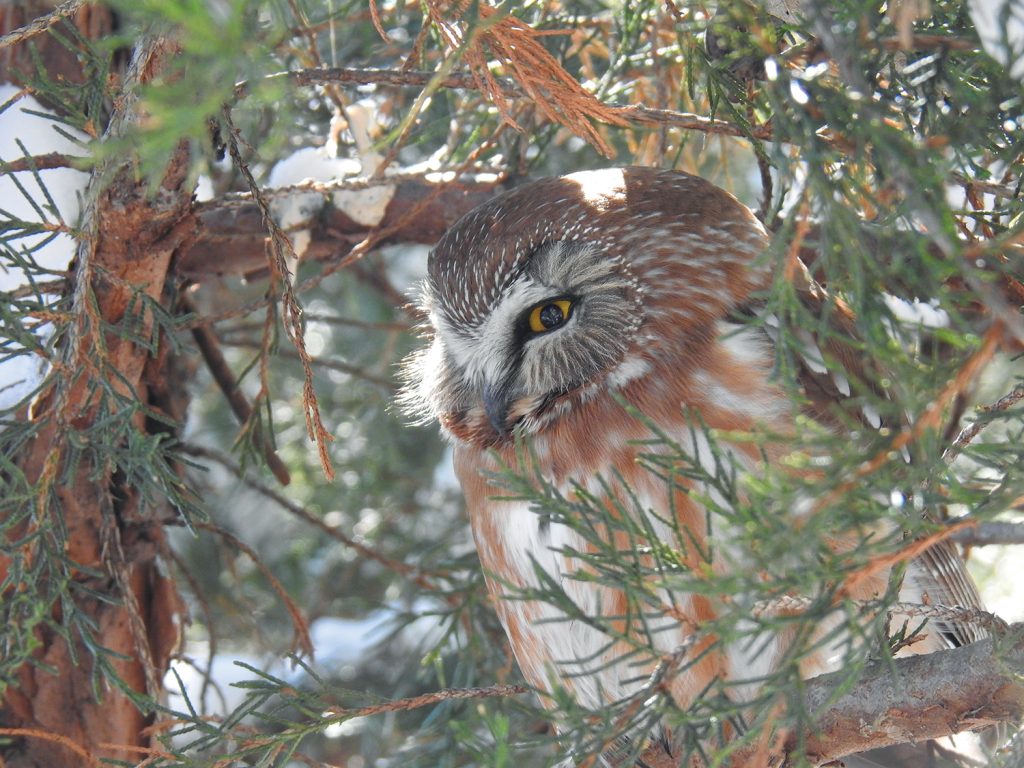
By Richard G. Biever
Whenever Tom Laycock sees a blue Indiana “Environment” license plate on a vehicle, he says he wishes he could show the driver his appreciation.
“I would love to have a stack of Post-It Notes and be able to run up and just thank everybody,” he said. “Unfortunately, I can’t. And people would take a dim view of me going around putting notes on people’s windshields.”
To “thank everybody,” Laycock, director of land acquisition for the Indiana Department of Natural Resources, would need more than a stack of Post-Its, anyway. He’d need well over 1.6 million Post-Its. That’s how many environmental license plates have been purchased or renewed by Hoosier motorists since its introduction as the state’s first “specialty plate” in 1993. This year will mark the plate’s 30th season of sales.
The Indiana Bureau of Motor Vehicles collects an extra $40 from motorists who request the environmental plate. While $15 of that fee is kept by the BMV for processing, the remaining $25 is used to protect the land, waters, and wildlife habitat of Indiana. In fact, plate sales are the only on-going source of funding the state has for acquiring land for conservation, preservation, and recreation.
Since 1993, $40 million has been raised through its purchase. Deposited directly into a special account, the funds are administered by the DNR. All projects funded by the plate for both DNR and its respective conservation partners are sponsored by DNR landholding divisions.
In collaboration with private local, regional, and national nonprofit land trusts, the DNR has been able to parlay that total amount to procure and protect 73,292 acres of land.
Sales of the environmental plate have always been strong, but Laycock noted it’s no longer the top seller among the plethora of specialty plates that have come along since. While all the specialty plates essentially raise $25 for each plate’s given cause, Laycock noted not all provide a tangible return for the purchaser like green spaces.
“We kept the outdoors open,” Laycock mused. While COVID closed just about everything else, he said the DNR has seen skyrocketing attendance at state parks, fish and wildlife areas, state forests and nature preserves. “We had people during the height of this going in and having picnics in parking lots — just to get outside. Trail use has blown up,” he added. “The way to support this is to continue to buy plates.”
Blue plate special

The Indiana General Assembly, with broad bipartisan support and then Gov. Evan Bayh’s signature, created the Indiana Heritage Trust during the 1992 session.
Described in the law: “The Indiana Heritage Trust program will acquire real property for new and existing state parks, state forests, nature preserves, fish and wildlife areas, wetlands, trails, and river corridors. The program will ensure that Indiana’s rich natural heritage is preserved or enhanced for succeeding generations.”
The specialty license plate — with its iconic soaring bald eagle emblem against its unique blue background — was an immediate hit with motorists.
The bald eagle had been successfully reintroduced in Indiana in the 1980s through another donation-driven DNR program. Though not connected to the eagle reintroduction, the environmental plate used the eagle to remind us of the natural land and waters needed to keep bald eagles in Indiana’s blue skies. After all, it was the loss of habitat — drained wetlands and razed woodlands — that primarily drove the last bald eagles from Indiana in the late 1800s.
While the plate design hasn’t changed in its 30 years, the General Assembly re-named the Indiana Heritage Trust in 2016 to honor President Benjamin Harrison, a conservationist who was the only president to be elected from Indiana. The Heritage Trust is now the President Benjamin Harrison Conservation Trust. The program still relies on funds raised through the sale of the environmental plate.
Grassroots growth
Long before the environmental plate, a handful of local land trusts and national and regional conservation organizations had been active around Indiana preserving natural areas. But the visibility of the environmental plate on the road has been credited for helping spawn more awareness and encourage the growth of nonprofit land trusts organizations.
“The land trust movement expanded and gained more credibility,” noted Laycock, “and the funding allowed them to start buying properties.”
As they acquired properties, Laycock explained, they could raise more funds themselves pointing to their successes. “Some of the land trusts don’t use the Harrison Trust much anymore,” he said, “simply because they’ve now moved on in their growth cycle.”

Land trusts are nonprofit conservation organizations. The focus and footprint of each local group can be as varied as the land and water and even the underground itself. Some land trusts focus on preserving and protecting natural areas, or agricultural land, or a particular watershed or vegetation type. Others focus on geological features, and others still on historic or cultural preservation. Indiana has some 25 land trusts that have preserved over 158,000 acres — either on their own or in partnership with the Harrison Trust fund and other donations and grants.
At least one land trust operates in each Indiana county. Besides working with state and federal agencies, these trusts partner with other nonprofits, businesses, industries, schools and universities, foundations, and individuals in support of their conservation mission.
Joe Tutterrow has long been active in Indiana conservation, working for 20 years in the DNR’s Division of Forestry. He then served as the first executive director of the Indiana Land Resources Council in the early 2000s. He recently retired as director of land protection for The Nature Conservancy in Indiana. But having grandkids, Tutterrow has said, was a “game changer” in his passion for conservation.
“I am concerned about the future our grandkids will face,” he noted. “The work of our land trust community is more important now than ever. People need to be more connected with nature. We need to help create a world that provides equal opportunity for all people to enjoy the many benefits that our natural world provides.”
Tutterrow is now board president of the Indiana Land Protection Alliance. ILPA (pronounced “ill-pah”) is Indiana’s statewide alliance of member land trusts, conservation organizations, and conservationists. Beginning about 20 years ago, the alliance had been a loose-knit group of volunteers. In 2016, the alliance acquired 501(c)(3) status to begin raising funds to hire staff and advance its conservation mission. ILPA hired its first executive director in 2019.
ILPA and a host of other environmental and conservation groups will be promoting the value of protected lands and demonstrating the need for greater funding for conservation during this session of the General Assembly. “The establishment of the Heritage Trust program was critically important,” Tutterrow said. “The license plate was just one of the funding mechanisms. Of late, it has been the only funding mechanism.”
A marriage

In the 27 years the license plate fund has made disbursements, 556 properties have been protected. Through matching grants with land trusts and other partnerships, every dollar the fund raised through plate purchases and additional direct donations brought back $2.12 of investment in Indiana’s natural heritage.
“We bring money to the table to leverage what the Harrison Trust brings to the table,” said Tutterrow. “And now, we hope to be able to share our story about how important this funding is to the Legislature to create additional funding.”
About $1 million a year comes to the Harrison Trust through the sale of the environmental plate, Laycock added. That doesn’t go very far when land is selling at $6,000-$8,000 per acre or even much more in some prime areas of growth.
Tutterrow noted that the number of specialty plates that burst onto the BMV radar after the initial success of the environmental plate and the many worthy causes they support makes choosing a plate a difficult personal decision. He said it comes down to personal priorities. “Right now, especially with the pandemic, people are coming to realize how important it is to get outside and to enjoy nature and green space. And that’s what the Harrison Trust is all about. That’s exactly the purpose of the Harrison Trust and our land trusts statewide.”
Raising awareness for legislators is where ILPA comes in as the voice for the land trusts and their volunteers statewide. ILPA’s core membership includes the nonprofit conservation organizations protecting natural areas and working lands throughout Indiana. While the mission of each land trust may vary, they work collaboratively with landowners to acquire land or conservation easements to ensure that the land is protected forever.
“Because land trusts are nonprofits, funding is always a challenge,” said Andrea Huntington, ILPA’s new executive director. “A role ILPA and the individual land trusts can play is to unite and elevate our voice so that our leaders and our lawmakers know the collective value of what we’re doing.
“It’s going to be so important in the coming years that our communities — rural, urban, suburban — are really thinking about what conservation looks like in the state,” she continued. “Indiana is seen as a prime state for development. Land trusts are not opposed to economic development; that’s a misconception a lot of people have. And our land trusts have done a really good job working with our economic development organizations.”
While Indiana focuses on creating business environments designed to attract highly educated and skilled younger talent from other states, Huntington said providing a natural environment should also be a priority.
“Quality of life and quality of place are increasingly important, especially for young families. To attract companies, attract employees, and retain a talented workforce — you need to have healthy, vibrant, and beautiful communities. Thoughtful, strategic, and collaborative planning is critical,” Huntington emphasized. “So, we need to figure out what a marriage between those looks like. It has to be a partnership.”
RICHARD G. BIEVER is senior editor of Indiana Connection. The Indiana DNR and Indiana Land Protection Alliance also provided information used in this story.
To help preserve Indiana’s natural lands for future generations, purchase the environmental license plate when you renew your plates this year, or make a donation directly to:
President Benjamin Harrison Conservation Trust
402 W. Washington St., Room W256
Indianapolis, IN 46204
Indiana’s Land Trusts
Indiana has 25 nonprofit land trusts that have preserved over 158,000 acres. At least one is operating in every county. Many counties are served by multiple land trusts with different missions. To learn more about each, visit the Indiana Land Protection Alliance website at ProtectIndianaLand.org .
- 101 Lakes Trust
- ACRES Land Trust
- Blue Heron Ministries
- Central Indiana Land Trust
- Clear Lake Township Land Conservancy
- George Rogers Clark Land Trust
- Indiana Karst Conservancy
- La Porte County Conservation Trust, Inc.
- LC Nature Park
- Little River Wetlands Project, Inc.
- Mud Creek Conservancy
- NICHES Land Trust
- Oak Heritage Conservancy
- Ouabache Land Conservancy
- Oxbow, Inc.
- Red-tail Land Conservancy
- Save the Dunes Conservation Fund
- Shirley Heinze Land Trust
- Sycamore Land Trust
- The Nature Conservancy
- Three Valley Conservation Trust
- Wawasee Area Conservancy Foundation
- Whitewater Valley Land Trust
- Wood-Land-Lakes RC&D Land Trust
- Woodland Savanna Land Conservancy



